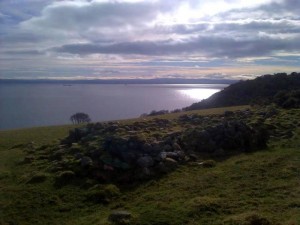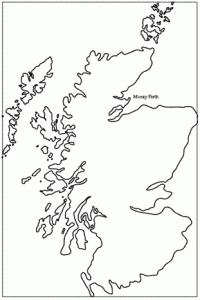 I’m delighted to introduce the Coastal History blog’s third guest post, by David Worthington, Head of the Centre for History at Scotland’s University of the Highlands and Islands. David has published most widely on British and Irish connections with central Europe in the early modern period, but, in recent years, he has researched and published increasingly on the Moray Firth, the region of northern Scotland in which he grew up. He has also worked there since 2008.
I’m delighted to introduce the Coastal History blog’s third guest post, by David Worthington, Head of the Centre for History at Scotland’s University of the Highlands and Islands. David has published most widely on British and Irish connections with central Europe in the early modern period, but, in recent years, he has researched and published increasingly on the Moray Firth, the region of northern Scotland in which he grew up. He has also worked there since 2008.
I hope that there will be many more guest posts in the future, to underscore the diversity of possible approaches to coastal history, and illustrate the different inflections and emphases within it. (Readers who missed them may want to check out the earlier guest posts by Julia Leikin and Katy Roscoe.) I especially welcome the sort of post that David has supplied here, with its historiographical focus offering a doorway to further reading, and its suggestion that a coastal approach helps us see with fresh eyes what’s been hidden in plain sight all along. His concept of “adjacent coasts” is an excellent example of a term that—just by existing—challenges us to frame new research questions and reconsider old definitions.
The idea of a “coastal history” first occurred to me on a train rushing southward from Seattle, Washington to Portland, Oregon. Looking out at Puget Sound on an overcast January day, I was strongly reminded of similar train journeys I had taken years earlier along Scotland’s firth-ridden coast. So it feels fitting, and especially satisfying, to learn that people in Scotland have found this approach useful. I’ve already booked my room for the conference he discusses here and look forward to blogging about it in the Spring. –I.L.
There are historical communities which have unified and been brought together around estuaries, inlets, fjords, bays and gulfs. In Scotland, local and regional histories sometimes leave distinctive evidence at the upper edges of a specific coastal environment of this type: the firth. Fourteenth-century chronicler, John of Fordun, extolled the country’s firths and sea lochs as ‘incomparable places of refuge from the perilous tempests of the ocean’.[1] Granted, here in the north Highlands, those who drive southwards to the region’s capital, Inverness, might not always notice their significance. Rush hours and road works aside, they have become accustomed to accelerating over three firths within the course of an hour. However, it is worth pausing to reflect on the fact that, in the earlier part of some of our lifetimes, two of the three ‘firthland’[2] bridges required to enable our relative complacency did not exist. Avoiding much longer and sometimes more gruelling overland routes, communities relied on, and were even sometimes defined by, a matrix of ferries and crossing points.
University-based historians have rarely published on this, both in Scotland and elsewhere. Yet more rigorous study of that local network of marine hubs between Ardersier and Little Ferry might be of local, regional, and international interest. It could provide us not only with an understanding of cross-firth communications, but offer a route towards conveying the history of communities situated along adjacent, or nearly adjacent, coastlines elsewhere.
How peculiar is Scottish firth history in the context of those other peoples, globally, who have found their space and built their homes around coastal edges of this kind? This question formed, for me, the background out of which the upcoming Firths and Fjords conference developed. On an oceanic scale, a growing number of scholars are showing how marine ‘highways’ have led to littoral locations experiencing a broader range of contacts with each other than with lands to their interior, work which is being situated, most helpfully, within an advancing current of ‘Coastal History’, by Isaac Land and others.[3]
The Moray Firth, a contested term, although broadly defined here as the indented triangle of coastline and sea from Fraserburgh to Wick, is hugely resonant with locals and tourists alike. Its coastline has also, in the sense suggested by Fordun, been a ‘refuge’, a location that has provided a home to sea- and land-borne migrants of numerous backgrounds, who have contributed towards creating what is, in many senses, a culturally rich place.[4] But it has, in addition, been a far from idyllic spot at times. Even its glorious, golden, sandy beaches have been the location for dark events, which can challenge any who might trudge around them unwittingly. In 1820, the first duke of Sutherland’s estate commissioner, James Loch, published an account of a phase of Clearance from the region’s inland straths and glens. Loch, without doubt, failed to appreciate the human consequences of what was taking place, and his own responsibility in that. According to him, amongst those he sought to relocate to the firth edge, their ‘wretchedness was so great, that after pawning everything they were possessed of, to the fishermen on the coast, such as had no cattle were reduced to come down from the hills in hundreds, for the purpose of gathering cockles on the shore.’ Even the lucky few who had a small amount of cash, in desperation, ‘came down and slept all night upon the beach, in order to watch the boat returning from the fishing, that they might be in time to obtain a part of what had been caught.’[5]
The firthlands are no exception to the rule which John Gillis and Isaac Land have shown separately elsewhere then, that coasts can take on ‘nightmarish’ as well as ‘utopian’ form.[6] Land argues for greater study of men and women’s engagement with ‘messy, intermediate places like tidal flats and brackish estuaries’ as well as ‘quiet coves and inlets, connected to the ocean but only gently shaped by it.’[7] Yet, as he and also Gillis have illuminated, again in different ways, early modern cartography also ‘exaggerated the size of bays and estuaries, promising water routes deep into the interior’ this helping explain why our modern cities are so frequently located ‘on rivers or estuaries’.[8]
Those looking for case studies might explore the Adriatic Sea, a place, which, in Pamela Ballinger’s recent analysis, has been characterised by transmarine ‘flows of peoples, goods, ideas, and words’ and the possible existence of a shared ‘cultural lingua franca or cultural grammar.’[9] Elsewhere, Christopher Pastore has explored New England’s Narragansett Bay during the seventeenth to nineteenth centuries, considering its estuaries to have ‘captivated some of the most imaginative early modern minds’ as an ‘avenue of transportation and trade, a conduit for economic and cultural exchange’. Control of New York was contested similarly ‘in the brackish borderlands of the Hudson River and Long Island Sound estuaries’.[10] Matthew Booker’s Down by the Bay tells a ‘set of connected stories’ around the San Francisco conurbation, viewing the bayside as a ‘liminal ribbon where land meets water’.[11] Influenced increasingly by Michael Pearson’s elucidation of ‘littoral society’, English-language historiographies of the Indian Ocean offer a growing focus on ‘adjacent coastline’ communities too, as does work on the Persian Gulf. [12]
It is hugely exciting to consider what the Dornoch conference might offer, in bringing historians from around the world together to explore the pasts of communities, brought together, for good or bad, by their shared experience of living around or along a stretch of coast.
[1] John of Fordun’s Chronicle of the Scottish Nation, William Skene ed., (Edinburgh, 1872), pp.31-2. The online Dictionary of the Scots Language gives us a simple, straightforward definition and an intriguing range of historical usage of the term, dating from the 1370s to the present: http://www.dsl.ac.uk/entry/dost/firth_n_2 (accessed 4 November 2015).
[2] For recent usage of this term to encompass the Dornoch, Cromarty, Kessock and Beauly Firths, but not the entirety of the Moray Firth, see John R. Baldwin ed., Firthlands of Ross and Sutherland (Edinburgh, 1991).
[3] http://porttowns.port.ac.uk/blog-32/ (accessed 31 October 2015).
[4] The most recent book-length analysis is James Miller, The Gathering Stream: The Story of the Moray Firth (Edinburgh, 2012); See also, David Worthington, ‘A northern Scottish maritime region: The Moray Firth in the seventeenth century’, in The International Journal of Maritime History, 23(2) (2011), pp.181-210; ‘The Settlements of the Beauly-Wick Coastline and the Historiography of the Moray Firth’, Scottish Historical Review, (forthcoming). There is, of course, some excellent groundbreaking work on Scotland’s other firths by Smout, Oram and many others, too numerous to mention here.
[5] James Loch, An Account of the Improvements on the Estates of the Marquess of Stafford, (London, 1820), pp.76-7.
[6] John Gillis, The Human Shore: Seacoasts in History (Chicago, 2012), pp.32, 158-9.
[7] Isaac Land, ‘Tidal Waves: The New Coastal History’, Journal of Social History, 40(3), (2007), p.740.
[8] Gillis, The Human Shore, pp. 70, 85; John R. Gillis and Franziska Torma, ‘Fluid Frontiers: New Currents in Marine Environmental History’, in John Gillis and Franziska Torma eds., Fluid Frontiers: New Currents in Marine Environmental History, (Cambridge, 2015), pp.1-11.
[9] Pamela Ballinger, ‘Adriatic Forum: A Comment’, Austrian History Yearbook, 42, (2011), p.61.
[10] Christopher L. Pastore, Between Land and Sea: The Atlantic Coast and the Transformation of New England (Cambridge, MA, 2014), pp.3, 5, 190.
[11] Matthew Booker, Down by the Bay: San Francisco’s History between the Tides (Oakland CA, 2013), pp.3-5.
[12] Michael Pearson, ‘Littoral Society: The Concept and the Problems’ Journal of World History 17(4), (2006), pp.353-373; Lawrence G. Potter ed., The Persian Gulf in History, (Basingstoke, 2009).












A minor point. The Dukedom was not created until 1833 so a more accurate title for Loch would be the one he used himself in relation to the Marquis of Stafford. Maybe pedantic but more accurate.
It’s not pedantic at all. Many thanks for pointing out this error in the post.
It’s not pedantic at all. Thanks for the correction.